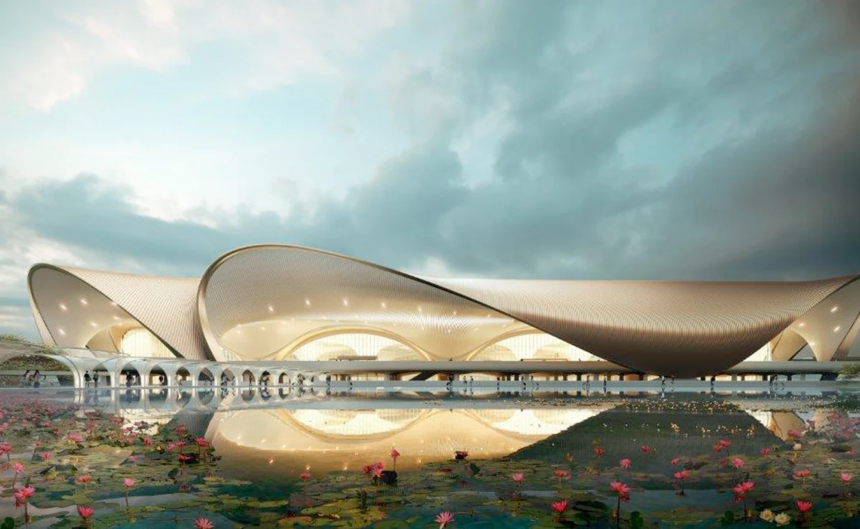
Navi Mumbai, a bustling city in the Mumbai Metropolitan Region (MMR), is set to receive a new international airport to cater to the increasing air traffic demand. The airport, located in Ulwe, will be built and managed by Adani Airports, one of India’s leading airport operators. With a focus on energy efficiency and environmental sustainability, the Navi Mumbai International Airport (NMIA) aims to become a state-of-the-art aviation hub.
The construction of the airport will be carried out in four phases, with the first two phases slated for completion by December 2024. The sprawling airport will cover an area of 1160 hectares, providing ample space for future expansion. Adani Airports has emphasized the importance of sustainability throughout the project, intending to make the airport one of the most environmentally friendly in the world.
One notable aspect of the airport’s design is its inspiration from the lotus, India’s national flower. This aesthetic touch symbolizes the harmony between modern infrastructure and the nation’s rich cultural heritage. Moreover, the project places a strong emphasis on eco-friendly practices. All vehicles operating within the airport premises will be electric, and charging stations will be installed throughout the facility. The airport will primarily rely on green electricity, with a significant portion generated through on-site solar power.
Maharashtra Chief Minister Eknath Shinde recently visited the site along with his deputy Devendra Fadnavis to review the progress of the project. During their visit, they were given a comprehensive presentation by the representatives of the Adani Group, highlighting the airport’s features and development plans. The Chief Minister emphasized that the new international airport would be of immense importance not only for Maharashtra but also for the entire country. He also highlighted that the airport would help alleviate the burden on the existing Mumbai airport, easing congestion and enhancing overall air travel experience.
However, the construction team has faced several challenges in the development of this ambitious project. Overcoming tall hills and dealing with substantial rock formations were among the major obstacles encountered during the land preparation phase. Particularly, a 2-kilometer long and 100-meter tall hill containing 55 million cubic meters of rock posed significant engineering challenges. Additionally, the course of the Ulwe river needed to be altered, as it initially crossed the site with a 40-meter-wide channel. The project team successfully rerouted the river, creating a new 200-meter-wide course that no longer hinders the airport development.
Once operational, the new Navi Mumbai International Airport will be less than 40 kilometers away from the existing Mumbai airport. It will be conveniently connected to the metropolis through the 22-kilometer Mumbai Trans-Harbour Link (MTHL), which will serve as the primary road connector. This strategic linkage will facilitate seamless travel for passengers and cargo between the airport and Mumbai’s bustling city center.
The Navi Mumbai International Airport represents a significant milestone in India’s aviation sector, aiming to boost regional connectivity, cater to rising air traffic, and promote sustainable practices. With Adani Airports at the helm, the project is poised to set new benchmarks in operational efficiency, environmental responsibility, and passenger experience. As the airport takes shape in the coming years, it is expected to become a vital gateway for both domestic and international travelers, contributing to the economic growth and development of the region.











